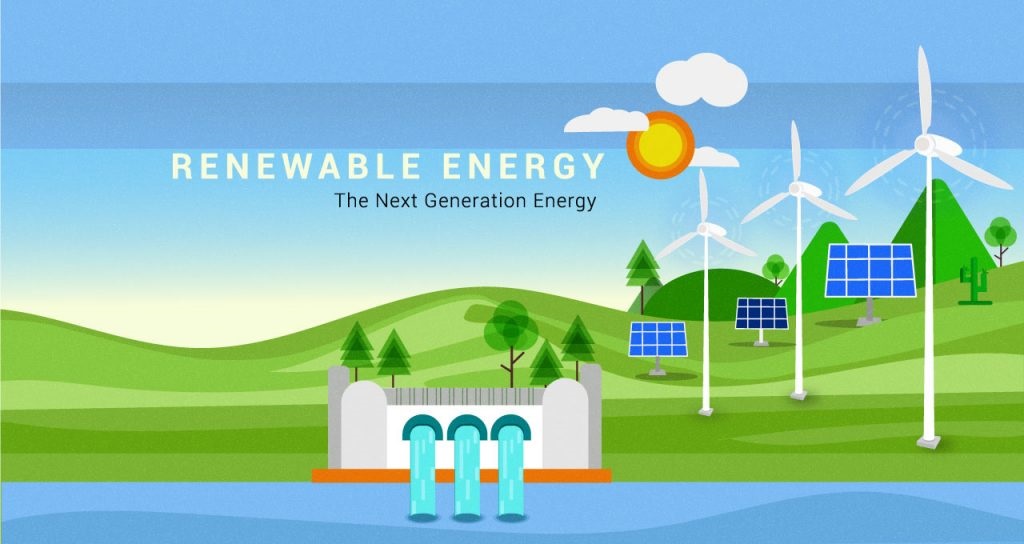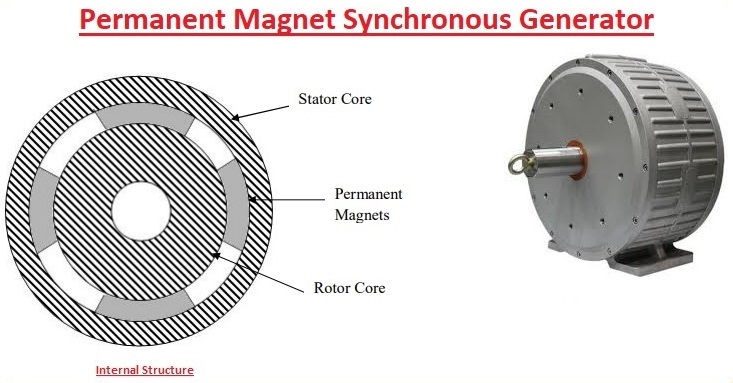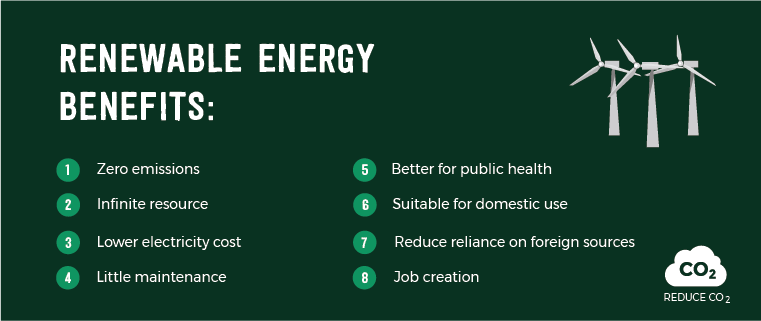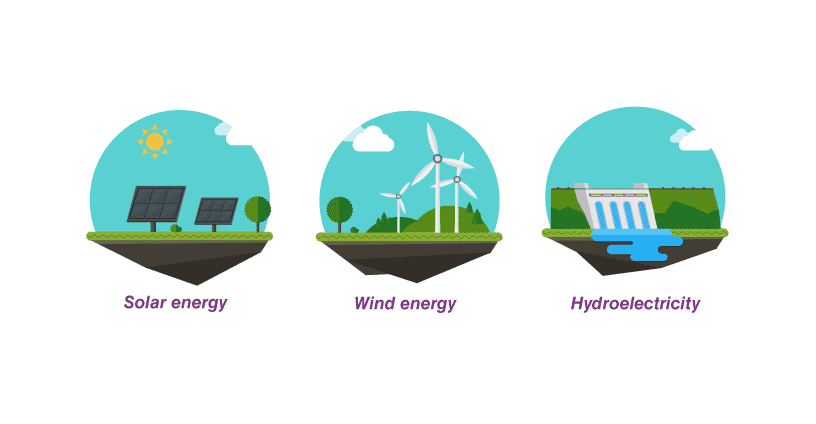
I. Introduction
– Definition of Permanent Magnet Generator
A permanent magnet generator is an electrical machine that generates electrical power from the mechanical energy of a rotating shaft. The generator consists of a rotor, which contains permanent magnets, and a stator, which contains the windings. When the rotor is rotated, the magnetic field of the permanent magnets induces an electrical current in the windings of the stator, which is then transferred to the load. The generator does not require an external power source to create the magnetic field, as the permanent magnets provide a continuous source of magnetic energy. Permanent magnet generators are commonly used in renewable energy applications, such as wind turbines and hydroelectric plants, as they are highly efficient and reliable.
– Importance of Permanent Magnet Generator
Permanent magnet generators (PMGs) are a type of electric generator that use permanent magnets to create a magnetic field, which in turn generates electricity. PMGs are becoming increasingly popular due to their many advantages over traditional generators. Some of the key benefits of PMGs include:
1. High efficiency: PMGs are highly efficient and can convert up to 90% of mechanical energy into electrical energy. This means that they require less fuel or energy input to produce the same amount of electricity as other types of generators.
2. Low maintenance: PMGs have fewer moving parts than traditional generators, which means that they require less maintenance and are less likely to break down. This makes them a more reliable and cost-effective option in the long run.
3. Environmentally friendly: PMGs are a clean and renewable source of energy that produce no emissions or pollutants. They are an excellent option for off-grid applications or for powering remote locations where traditional power sources are not available.
4. Versatility: PMGs can be used for a wide range of applications, from small-scale residential use to large-scale industrial and commercial applications. They can be used to power homes, businesses, farms, and even entire communities.
5. Cost-effective: PMGs are generally more cost effective than traditional generators, especially over the long term. Although they may have a higher upfront cost, their lower maintenance and fuel costs make them a more affordable option in the long run.
Overall, PMGs are an important technology for the future of renewable energy. As the world continues to shift towards cleaner, more sustainable sources of energy, PMGs will play an increasingly important role in meeting our energy needs.
II. Working Principle of Permanent Magnet Generator

– Magnetic Field Theory
The magnetic field theory is the fundamental principle behind the operation of a PMG. It states that a magnetic field is produced around a magnetic material, such as a permanent magnet when it is subjected to an electric current. The strength of the magnetic field is directly proportional to the magnitude of the electric current flowing through the material.
The direction of the magnetic field is determined by the direction of the electric current. The magnetic field lines form a closed loop around the magnetic material, and the strength of the magnetic field decreases with distance from the material.
A PMG consists of a rotor, which is a rotating shaft, and a stator, which is a stationary component. The rotor is made up of a permanent magnet, which produces a magnetic field around it. The stator consists of a set of coils, which are wound around a magnetic core.
When the rotor rotates, the magnetic field produced by the permanent magnet interacts with the magnetic field produced by the coils in the stator. This interaction induces an electric current in the coils, which is then converted into electrical energy.
The strength of the electrical energy produced by the PMG is directly proportional to the strength of the magnetic field produced by the permanent magnet and the speed of rotation of the rotor. The faster the rotor rotates, the higher the frequency of the electrical energy produced.
In summary, the magnetic field theory is the fundamental principle behind the operation of a PMG. The interaction between the magnetic field produced by a permanent magnet and the magnetic field produced by a rotating shaft generates electrical energy, which can be used for various applications.
– Coil Design
The coil design of a permanent magnet generator is critical to its performance and efficiency. The design should take into account the number of turns, the wire gauge, and the shape and size of the coil.
The number of turns in the coil determines the voltage output of the generator. More turns will result in a higher voltage output, but also increase the resistance and decrease the current output. The wire gauge should be selected based on the current output required.
The shape and size of the coil should be designed to maximize the magnetic flux through the coil. This can be achieved by using a cylindrical or rectangular coil, depending on the shape of the magnet. The coil should also be positioned close to the magnet to maximize the magnetic field strength.
The coil should be made of high-quality copper wire with good insulation to minimize losses due to resistance and heat. The coil should also be designed to withstand the mechanical stresses of the rotating magnet and the centrifugal forces generated during operation.
Overall, the coil design of a permanent magnet generator plays a critical role in its efficiency and performance and should be carefully considered during the design process.
– Voltage and Current Production
A permanent magnet generator (PMG) produces both voltage and current through electromagnetic induction. The generator consists of a rotor with permanent magnets and a stator with wire coils. As the rotor spins, the magnets create a magnetic field that passes through the wire coils in the stator, inducing a voltage and current in the coils.
The amount of voltage and current produced by a PMG depends on several factors, including the strength of the magnets, the speed of the rotor, and the number of wire coils in the stator. The voltage produced is directly proportional to the speed of the rotor, while the current produced is proportional to the number of wire coils and the strength of the magnets.
PMGs are commonly used in wind turbines and hydroelectric systems to convert mechanical energy into electrical energy. They are also used in portable generators and other small-scale power generation systems.
III. Advantages of Permanent Magnet Generator

– High Efficiency
– Low Maintenance
– Environmentally Friendly
IV. Applications of Permanent Magnet Generator

1. Wind turbines: Permanent magnet generators are widely used in wind turbines to convert the kinetic energy of wind into electrical energy. They are highly efficient and reliable, making them a popular choice for wind energy generation.
2. Hydroelectric power plants: Permanent magnet generators are also used in hydroelectric power plants to convert the mechanical energy of falling water into electrical energy. They are particularly useful in low-head hydroelectric systems where the water flow is slow and the head is low.
3. Electric vehicles: Permanent magnet generators are used in electric vehicles to generate electricity for charging the battery. They are also used in hybrid vehicles to provide additional power to the engine.
4. Marine applications: Permanent magnet generators are used in marine applications, such as wave and tidal energy generation, as they are highly reliable and can withstand harsh marine environments.
5. Aerospace applications: Permanent magnet generators are used in aerospace applications, such as satellite power systems and space probes, as they are lightweight and highly efficient.
6. Industrial applications: Permanent magnet generators are used in various industrial applications, such as backup power systems, emergency power systems, and microgrid systems. They are also used in remote areas where there is no access to the grid.
V. Challenges and Opportunities of Permanent Magnet Generator
– Cost
– Integration with Power Grid
– Emerging Technologies
VI. Conclusion
– Future of Permanent Magnet Generator
Based on current trends and advancements in technology, the future of permanent magnet generators looks promising. These generators are becoming increasingly popular in various industries, including wind and hydropower generation, due to their high efficiency, low maintenance, and reliability.
One of the significant advantages of permanent magnet generators is their ability to generate power at low speeds, making them ideal for use in low-wind areas and small-scale applications. They also have a more compact design, which reduces the overall weight and size of the generator, making it easier to install and transport.
With the growing demand for renewable energy sources, permanent magnet generators are likely to play a significant role in the future of energy production. As technology advances, these generators are expected to become more efficient, cost-effective, and versatile, making them suitable for a broader range of applications.
Overall, the future of permanent magnet generators looks bright, and they are likely to continue to be a popular choice for renewable energy production.